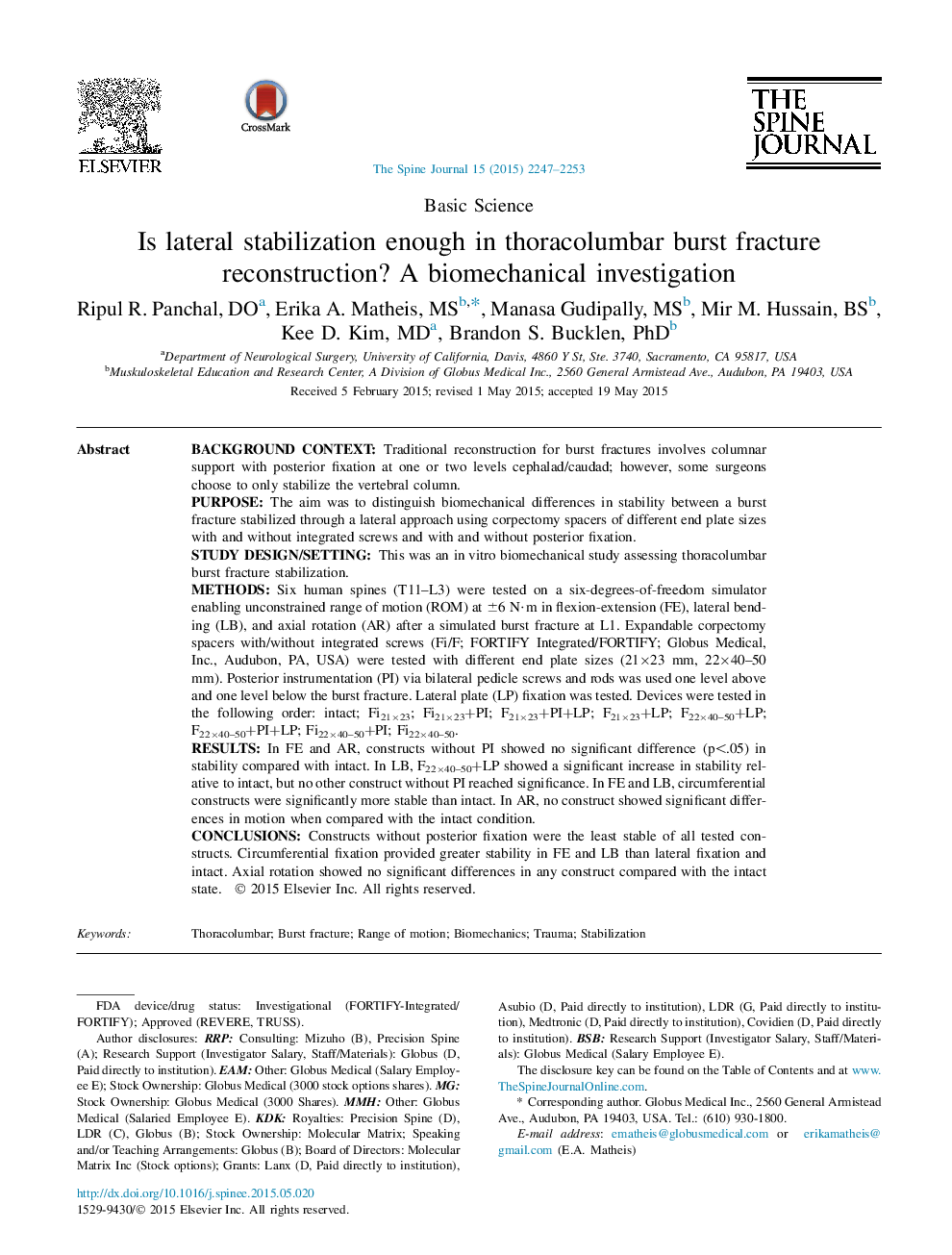| Article ID | Journal | Published Year | Pages | File Type |
|---|---|---|---|---|
| 6212109 | The Spine Journal | 2015 | 7 Pages |
Background contextTraditional reconstruction for burst fractures involves columnar support with posterior fixation at one or two levels cephalad/caudad; however, some surgeons choose to only stabilize the vertebral column.PurposeThe aim was to distinguish biomechanical differences in stability between a burst fracture stabilized through a lateral approach using corpectomy spacers of different end plate sizes with and without integrated screws and with and without posterior fixation.Study design/SettingThis was an in vitro biomechanical study assessing thoracolumbar burst fracture stabilization.MethodsSix human spines (T11-L3) were tested on a six-degrees-of-freedom simulator enabling unconstrained range of motion (ROM) at ±6 N·m in flexion-extension (FE), lateral bending (LB), and axial rotation (AR) after a simulated burst fracture at L1. Expandable corpectomy spacers with/without integrated screws (Fi/F; FORTIFY Integrated/FORTIFY; Globus Medical, Inc., Audubon, PA, USA) were tested with different end plate sizes (21Ã23 mm, 22Ã40-50 mm). Posterior instrumentation (PI) via bilateral pedicle screws and rods was used one level above and one level below the burst fracture. Lateral plate (LP) fixation was tested. Devices were tested in the following order: intact; Fi21Ã23; Fi21Ã23+PI; F21Ã23+PI+LP; F21Ã23+LP; F22Ã40-50+LP; F22Ã40-50+PI+LP; Fi22Ã40-50+PI; Fi22Ã40-50.ResultsIn FE and AR, constructs without PI showed no significant difference (p<.05) in stability compared with intact. In LB, F22Ã40-50+LP showed a significant increase in stability relative to intact, but no other construct without PI reached significance. In FE and LB, circumferential constructs were significantly more stable than intact. In AR, no construct showed significant differences in motion when compared with the intact condition.ConclusionsConstructs without posterior fixation were the least stable of all tested constructs. Circumferential fixation provided greater stability in FE and LB than lateral fixation and intact. Axial rotation showed no significant differences in any construct compared with the intact state.
